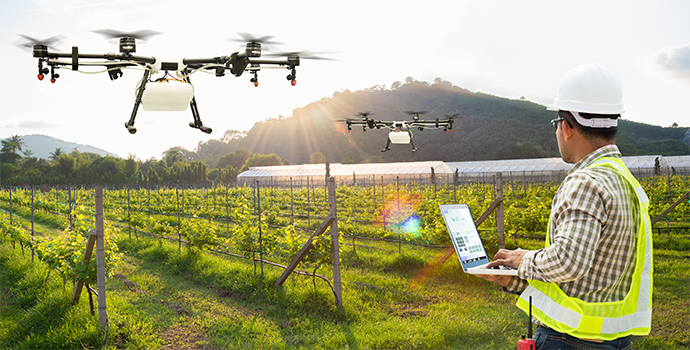3 Ways Video Is Revolutionizing Business in 2022

Organizations across every sector are unlocking business value with video. The healthcare industry’s rapid adoption of telehealth and connected wellness was powered by streaming technologies, while social media giants like Facebook are reimagining their strategy entirely to focus on immersive virtual reality (VR) video.
Internally and externally — in both business-to-business (B2B) and business-to-customer (B2C) settings — video has proven a dynamic tool. It can streamline operational efficiencies, boost customer experience, and transform an organization’s product offering altogether. Ultimately, this all drives toward one goal: revenue growth.
Struggling to secure your facilities? Today’s smart surveillance solutions are changing the game. Hoping to boost the customer experience across digital touchpoints? Interactive video experiences are the way to go. Trying to adapt during a global pandemic? Follow the lead of organizations in every industry and leverage video to do just that.
By integrating streaming technologies into their core strategy, today’s most innovative companies are transforming how they conduct business and engage customers. This blog looks at three of the most exciting ways that video is revolutionizing business in 2022.
1. Gamification and Interactivity
With the advent of two-way video and engagement tools like chat and polling, the battle for eyeballs has transformed into a battle for participants. End users expect interactive video experiences whether consuming social media content on their smartphone or completing professional training in the classroom.
In the B2C realm, we now have connected fitness and shoppable video. Stationary bikes come with built-in touchscreens for viewing live and on-demand exercise classes; whereas virtual malls like Taobao Live pair e-commerce with interactive games to create excitement and incentivize spending.
But interactivity isn’t just for fun and games. Bidirectional video also plays a role in industries ranging from healthcare (think robotic-assisted surgery) to education (think virtual training with 360° immersive video).
Gamification, or the use of game-like elements in practical activities, is an overlapping trend. For instance, the engineering trailblazer EWI partnered with Wowza to develop remote-controlled robotic streaming architecture for their tele-welding solution.
In a similar vein, immersive gaming technologies like augmented reality (AR) and virtual reality (VR) are gaining traction in business settings. The construction industry is already leveraging AR to enable computer-aided drawing (CAD) overlays for workers in the field, whereas 360° VR lends well to real estate.

Just imagine being able to walk onto a job site with AR glasses that reveal the plumbing lines beneath the floor. Widespread AR/VR adoption promises to improve efficiency, minimize costs, and conserve resources for every use case imaginable.
- Low Latency: Sub-five second latency is often crucial when integrating live video into interactive applications, ensuring two-way participation without any distracting lag time.
- Bilateral Engagement: Interactive overlays like chat, polling, and two-way video requires synchronizing timed metadata to maintain a continuous feedback loop between content and end users.
- Extended Reality (XR): Computer-altered experiences ranging from holographic content to snapchat filters will define the next wave of interactivity in 2022 and beyond.
2. Personalization and Hyper-Relevant Experiences
Personalization is key to capturing dwindling attention spans. Just as viewers have grown accustomed to two-way engagement, many have lost the patience for irrelevant content. Users expect targeted, curated experiences every step of the way — from content recommendations to the commercials supplementing a broadcast.
Just take it from Peter Naylor, SVP of sales at Hulu:
“Whether you’re a streaming service or in the traditional cable business, delivering relevant ads is key. Viewers don’t hate ads, they hate irrelevancy.”
Luckily, online video workflows make it easy to deliver more personalized experiences. Today’s data-rich ecosystems give publishers actionable insight into end-user demographics, viewing history, and geolocation. As a result, content distributors can keep viewers hooked as the primary broadcast goes to commercials — giving rise to free, ad-supported TV (FAST) services like Peacock and Roku.

Improvements in accessibility have also become the norm across digital platforms. TikTok leads the way with new accessibility features to maintain inclusivity. Automatic captioning, text-to-speech options, and photosensitivity warnings have all been developed as part of these efforts.
The social media app likely relies on these same technologies to power its sophisticated content recommendations. Beyond increasing inclusion for the hearing impaired, captions can inform AI/ML workflows with additional metadata. Text transcripts extracted via captioning technology speed up content indexing, which leverages algorithms to quickly categorize videos and serve the most relevant suggestions to users.
- Artificial Intelligence (AI) and Machine Learning (ML): By analyzing video and audio data using natural language processing and computer vision technology, AI/ML technologies support advanced content indexing to improve personalization.
- Video Content Management Systems (CMS): Video content management systems allow publishers to manage giant collections of data in one spot, thereby streamlining discoverability for end users.
3. Smart Surveillance and Remote Monitoring
5G connectivity and video have collided to create intelligent ecosystems equipped with real-time surveillance technology. From smart hospitals to smart cities, CCTV is being swapped out for internet of things (IoT) ecosystems. And because online video is both flexible and affordable to deploy, intelligent surveillance has even become prevalent in consumer electronics such as baby monitors and doorbell cams.
In the B2B space, surveillance plays a role in public facilities like hospitals. Thermal cameras pointed at entryways help screen for elevated body temperatures, and live video feeds allow practitioners to monitor patients from the nurses’ station. From there, AI/ML helps automate remote monitoring by detecting unusual behavior such as a patient fall.
Another wide-ranging application is the use of unmanned aerial vehicles (UAE) — a.k.a. drones — for everything from supply chain management to emergency response. Examples include crop yield surveillance in agricultural applications, wildfire detection, quality assurance on the production line, and department of transportation (DOT) solutions.

Whether you’re an established organization looking to overhaul legacy CCTV systems or a burgeoning tech company pushing the limits of IoT, online video technologies combined with advanced AI/ML capabilities are paving the way for future innovation.
- Real-Time Video: For many surveillance and remote monitoring applications, there’s no room for lag. Sub-second streaming delivered via WebRTC eliminates any problematic delays for these types of use cases.
- 5G: For IoT devices ranging from smart traffic lights to Amazon’s delivery drones, 5G extends high-capacity computing capabilities beyond the physical premises.
Conclusion
Businesses are digitally transforming at a rapid pace with video technology. Luckily, we designed our streaming solution for any organization looking to integrate video into their products or services. Just let us know what you’re trying to achieve, and Wowza will deliver the reliable, scalable video technologies required to support your business needs.




